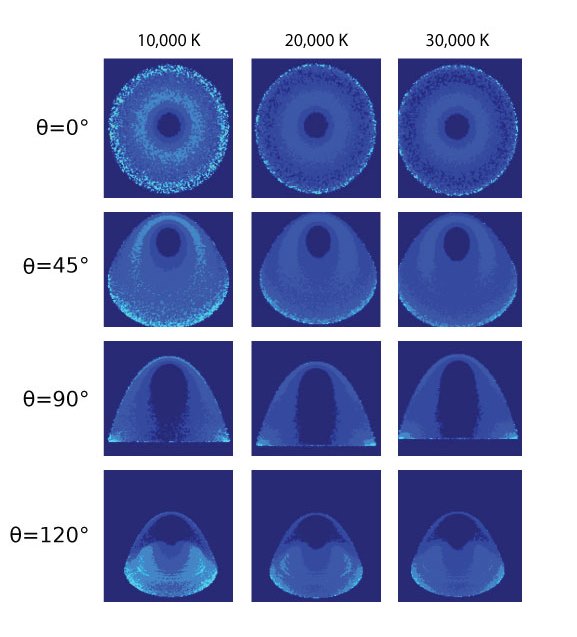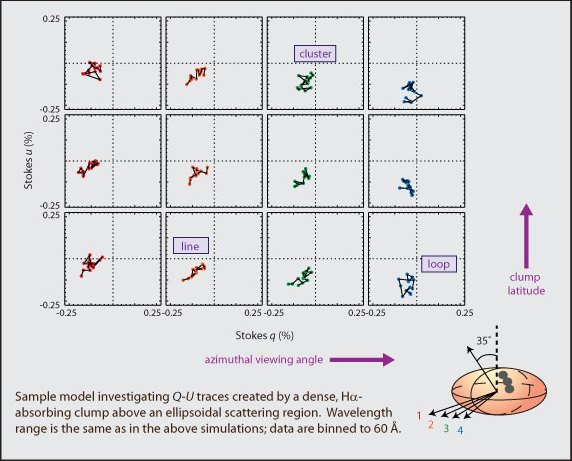|
|
 |


|
| SLIP Code
|
| My computational group uses a 3-dimensional Monte Carlo radiative transfer code, called SLIP, that I developed to simulate the behavior of polarized lines in complex circumstellar enviroments such as arise in interacting supernovae and stars surrounded by dense winds or shells. SLIP performs full radiative transfer without relying on the Sobolev approximation or any geometrical simplifications. It currently considers scattering by electrons and the resonant/fluorescent lines of hydrogen. We run our simulations on the NSM HPC cluster at DU and the Stampede supercomputer at the Texas Advanced Supercomputing Center, where our computational award through NSF's XSEDE partnership was recently renewed. |
| |
| We are currently preparing two articles featuring SLIP results that will appear in 2015. Ongoing work includes using SLIP to analyze data obtained through the SNSPOL collaboration, investigating the formation of Q-U loops in both stellar and supernova polarization spectra, developing a GPU-based version of the code with colleagues in DU's Mathematics and Computer Science departments, and simulating the polarization arising from bow shocks in massive-star winds and SN ejecta with colleagues at East Tennessee State University. |
| |
| My group's research in this area has been supported by NSF awards AST-0807477 and AST-1210372 and two DU Professional Research Opportunities for Faculty awards. |
| |
| Recent results: |
| |

Polarization of circumstellar bow shocks due to electron scattering, Shrestha et al. 2014, AAS 223. 154.24 |
|

Lines and loops: Polarized spectra reveal three-dimensional supernova structure, Hoffman 2011, Explosive Ideas About Massive Stars conference.
Full poster > |
|
|


